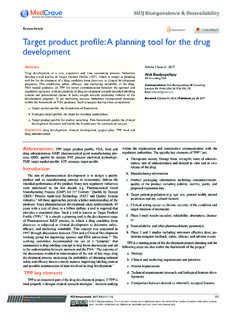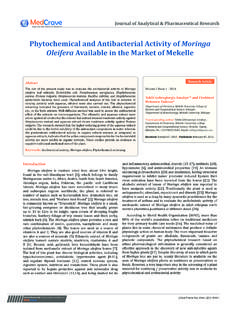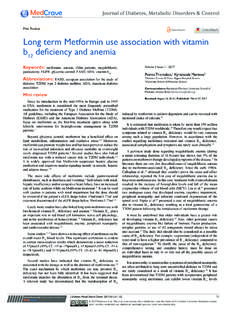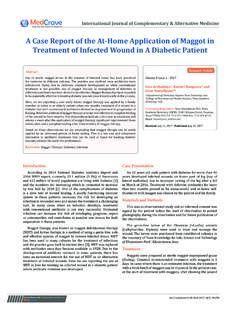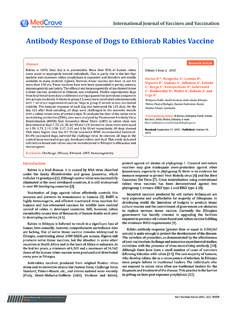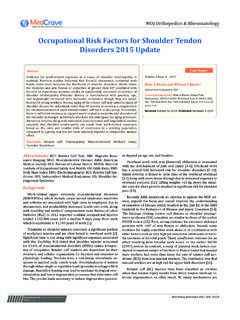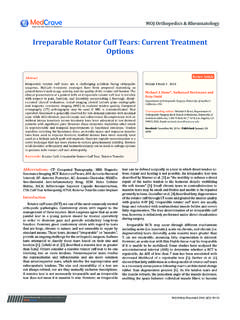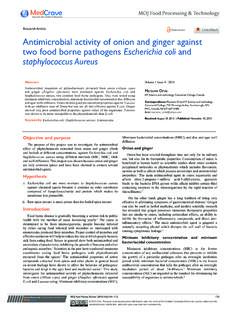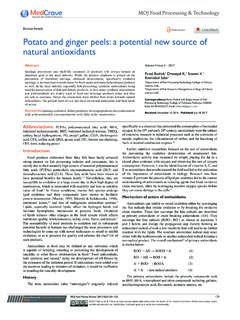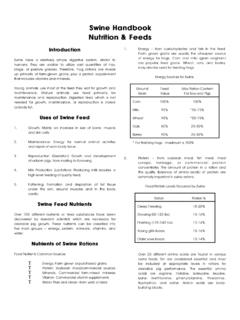Transcription of Effect of Betaine Hydrochloride as Feed Attractant …
1 Journal of Aquaculture & Marine BiologyEffect of Betaine Hydrochloride as feed Attractant on Growth, Survival and feed Utilization of Common Carp, Cyprinus carpioSubmit Manuscript | : NFE: Nitrogen Free Extractives; DMPT: Dimethyl- Beta-PropiothetineIntroductionAquacultur e is one of the fastest growing sectors in the world. It is mainly contributing to the increase in export, earning, income, employment, food and nutritionally security for the developing countries. Freshwater aquaculture in India has evolved from the stage of a domestic activity in eastern Indian states like West Bengal and Orissa to that of an organized Industry in recent years with the states like Andhra Pradesh, Punjab, Haryana, Uttarakhand and other states, taking up fish culture on a commercial scale [1].
2 However, the adequate nutrition is a pre-requisite for optimum growth and survival of farmed fishes. The success of farming operations depends on the availability and supply of nutritionally balanced and acceptable diet. It is well known that proper nutrition is one of the most important factors which influence the ability of an animal to attain genetic potential for growth, reproduction and longevity [2]. Various studies have been conducted to maximize the feed intake by using feed additives, feed attractants and stimulants which have appeared as a boon in aquaculture which not only enhances the feed intake and growth but also help in weaving of hatchlings of marine and freshwater fish for artificial diet [3,4].
3 Feeding in fish, as in other groups of animals is an important function of life. Many sensory systems contribute to fish feeding behavior. Chemo attraction and chemo stimulation facilitate the initial location (olfactory) and final consumption (gustatory response) of food in the feeding process of fish. Growth performance may be improved by using feeding stimulants in order to increase food intake [5]. feed attractants or chemo stimulants are therefore generally included in feeds or especially slow feeding species. The use of feed attractants in manufactured aqua feeds has received considerable attention in the recent years.
4 The reason behind their use has been to improve dietary food intake and at the same time by promoting quicker food intake [6]. The time interval between feed offered and intake by the animal is minimized in water and thereby prevent the leaching of water soluble nutrients. Further, attractants provide additional nutrients for protein and energy metabolism so that aqua feeds are ingested with minimum wastage and maximum feed efficiency, which also helps to reduce water pollution [7]. Chemo reception is an important component of food detection in many aquatic animals including fish and shellfish.
5 This has been demonstrated repeatedly by conducting behavioral studies using the amino acid and related compounds as potent feeding stimulants. Fish locate food stuff by following chemical signals that are produced by the respective prey or food, and the olfaction in fish, takes place entirely in the aquatic environment [8]. The carrier of stimulant chemical molecules is water, thus chemicals that are detected by olfaction of fish need to be volatile, but must also be soluble in water [4]. Common carp, Cyprinus carpio, one of the most important fresh water cultivable speciesis benthic, omnivorous, does well in muddy and eutrophic water with soft sediments.
6 It enjoys the nationwide distribution in India and occupies 3rd place in the world aquaculture production after silver carp and grass carp [2]. It can be cultured in monoculture particularly by small and artisan farmers in rural aqua farming andalso in polyculture with Indian major carps, as it readily accepts pellet feeds and grows fast. It has major advantages over the other carp species that too in a tropical country like India because it can be bred almost throughout the year and has a shorter generation time, andalso grow much faster than the major carps such as rohu and mrigal, but its growth is almost equal to that of catla [9].
7 Improvement in feed utilization helps to reduce feed wastage and feed costs. In this direction, feed attractants play role in effective feed utilization by fish, in Volume 4 Issue 3 - 2016 Department of Aquaculture, Animal and Fisheries Sciences University, India*Corresponding author: Shivananda Murthy H, Department of Aquaculture, College of Fisheries, Karnataka Veterinary, Animal and Fisheries Sciences University, Mangalore 575002, India, Email: Received: June 05, 2016 | Published: July 08, 2016 Research ArticleJ Aquac Mar Biol 2016, 4(3): 00083 AbstractThe efficiency of Betaine as a feed Attractant on growth, survival and feed utilization of common carp (Cyprinus carpio) was evaluated in this study.
8 Betaine was incorporated at and in a 30% protein diet, basal diet without supplementation of Betaine served as control. The experimental diets were fed to common carp fingerlings for 60 days in fiber-glass tanks measuring x x feed was given twice daily at a rate of 5% of the body weight during the first 15 days and 3% supplemented with Betaine fed common carps showed higher growth in terms of specific growth rate, survival, and food conversion rate and protein efficiency : Betaine ; feed Attractant ; Growth; feed utilization; Cyprinus carpio Citation: Murthy HS, Manai A, Patil P (2016) Effect of Betaine Hydrochloride as feed Attractant on Growth, Survival and feed Utilization of Common Carp, Cyprinus carpio.
9 J Aquac Mar Biol 4(3): 00083. DOI: of Betaine Hydrochloride as feed Attractant on Growth, Survival and feed Utilization of Common Carp, Cyprinus carpio2/4 Copyright: 2016 Murthy et common The present study was taken up to know the Effect of Betaine Hydrochloride as feed Attractant on growth, survival and feed utilization in common carp, and MethodsExperimental animalsCommon carp (Cyprinuscarpio) fry weighing 1 g (+- ) procured from a Government Fish Seed Farm at the Bhadra Reservoir Project in Shivamogga, to the fish farm of the College of Fisheries in Mangaluru, were acclimatized to the pellet diet containing 30% protein for a period of 15 days.
10 Formulation, preparation and proximate composition of experimental dietsExperimental diets were prepared incorporating Betaine Hydrochloride at two graded levels namely (T1) and (T2). Diet without Betaine Hydrochloride served as control (T0). The basal diet with a crude protein content of 30%, using fish meal and groundnut cake as major protein sources was formulated according to square method [10]. All the diets were analyzed for proximate composition according to [11]. Moisture content was estimated by heating samples at 105 C for 30 minutes and then cooled and weighed till a constant weight was obtained.
